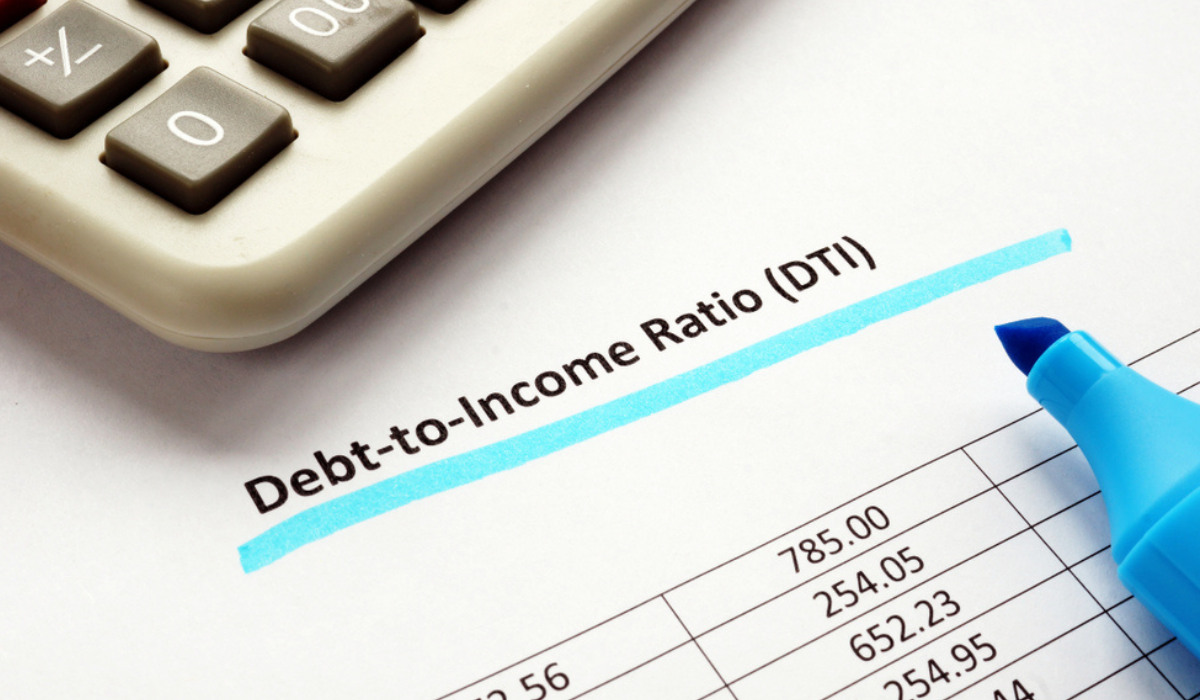The debt-to-income ratio is the percentage of your gross monthly income and monthly payouts to pay back debts or borrowings. It helps lenders determine your borrowing risk. A person can pay back their debts without any undue pressure. A high debt to income ratio means a lower credit score and can create financial pressure of repayment, making future loans more difficult to obtain.
A debt-to-income ratio allows lenders to evaluate what percentage of your current income is already used to repay your existing debts. The borrower can use the debt-income balance to assess whether they should take loans currently or defer any purchase for a period.
Lenders look for a low debt-to-income ratio that demonstrates a good balance between debt and income. In general, the lower the debt-income ratio, the higher the chance you will get the loan.
- A low debt-to-income (DTI) ratio helps lenders lend a loan because they often believe these borrowers are more likely to manage monthly payments successfully.
- debt-to-credit ratios are not impacted by credit utilization.
- Creating a budget, paying off debts, and making an intelligent saving plan can help fix a poor debt-to-credit ratio. However, it takes time and can be done by creating a budget over time.
WHAT IS THE DEBT-INCOME RATIO?
The debt-income ratio is the percentage from dividing all your monthly debt payments by your gross monthly income. Existing loan EMI’S as well as credit card EMI’s include your monthly debt repayments, whereas your gross salary is your monthly income which you get after all tax deductions.
Debt: Income = Gross Monthly Debt / Gross Monthly Income
- Gross monthly debt includes your credit card payments, loans, and mortgage Sum up your monthly debt payments.
- Now divide the amount obtained from your total monthly debt payment by your monthly gross income.
- Divide the result obtained by 100 to achieve your Debt-to-Income percentage.
An ideal debt-to-income ratio ranges from 21-36%. The maximum and minimum DTI ratio varies from lender to lender. For example, if your debt-income ratio is between 35-60%, there is a minimal chance that your loan may get approved, and you may also have to pay a higher interest rate. Borrowers whose debt-income ratio is higher than 65 % may find it very difficult to find a loan.
So, the lower the debt-to-income ratio, the better the chances that the applicant loan can be approved, or at least considered, for the credit.
ARE THERE ANY LIMITATIONS TO DEBT-TO-INCOME RATIO (DTI)?
Although, the DTI ratio is very crucial in determining the financial ratio or metric used in making a credit decision. The other essential parameters include your credit history and credit score that will add to extending credit to a borrower.
A credit score determines your ability to pay back a debt. Numerous factors impact your score negatively or positively, and some include late payments, several open credit accounts, delinquencies, available credit accounts if any, and the balance remaining on credit cards.
The DTI ratio generated does not distinguish between different types of debt and the cost of servicing that debt. Also, the interest rates are lower in some loans like student loans, compared to credit cards that carry higher interest rates, but they’re lumped in together in the DTI ratio calculation.
Transferring your balances from your high-interest card rates to low-interest credit cards can decrease your monthly payments and total monthly debts, causing a decrease in the DTI ratio. However, your total debt outstanding would remain unchanged.
The debt-to-income ratio is just one metric used by lenders in making a credit decision, and there are many other parameters.
WHAT CAN YOU DO TO DECREASE YOUR DEBT-INCOME RATIO?
It’s good to keep track of your debt-income ratio all the time. Knowing the DTI ratio makes a part of sound financial planning and helps you keep a tab on your finances.
Keeping a check on the DTI ratio may help you avail of a loan when your income rises.
A few tips that can help you lower your debt-income ratio are mentioned below:
- Make your purchases cautiously and try to postpone or avoid unnecessary purchases.
- If you already have a loan, increase your EMI amount and pay off the loan quicker. It may temporarily increase your debt-income ratio, but over time the percentage will decrease.
- Refrain from taking more loans until your debt-income ratio reaches a percentage below 35%
- Look for another way to increase your income like, in your free time, freelancing or part-time job.
- If possible, try foreclosing any existing loans to decrease your Debt-income ratio.
Takeaway: A low debt-to-income ratio is what financial credit providers want to see. So, it’s crucial to manage your monthly debt payments effectively to become a potential borrower.




